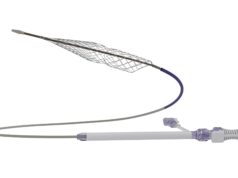
Results from a first-in-human, prospective, single-arm study of the Akura Medical thrombectomy system (Akura Medical) for pulmonary embolism (PE) were revealed this week at The VEINS 2023 (28–30 October, Las Vegas, USA).
Presenter Jay Mathews (Manatee Memorial Hospital, Bradenton, USA) detailed that the study enrolled five patients at two sites in Tbilisi, Georgia, in March and April 2023 to evaluate the safety and performance of percutaneous mechanical thrombectomy using the Akura Medical thrombectomy system. The Akura system is a low-profile system that combines targeted clot removal with a platform capable of providing objective data on haemodynamics to help clinicians understand the relationship between thrombus removal and alleviation of pulmonary artery pressures.
The key inclusion criteria included medically eligible patients aged >18 years with clinical symptoms consistent with acute PE or sPESI (simplified PE Severity Index) ≥1, with symptom onset ≤14 days, proximal PE confirmed by computed tomography angiography (CTA), a stable heart rate <130 bpm prior to procedure, and systolic blood pressure ≥90 mmHg, with a right ventricular/left ventricular (RV/LV) ratio >0.9. Five patients were enrolled, treated, and followed through seven-day follow-up.
The patients successfully received treatment with the Akura thrombectomy system to remove pulmonary thrombus in the pulmonary vasculature. The average procedure time from anaesthesia start to closure was 117±50 minutes, with an average fluoroscopy time of 30±21 minutes (range, 13–68 minutes). Total blood loss was 247±80mL on average, with 189±120mL of contrast used per procedure. After 48 hours, the RV/LV ratio decreased by 0.35 from 1.29±0.15 to 0.94±0.12 (p<0.05; 26.85% reduction). Through seven-day follow-up, there were no deaths, device-related major bleeding, or device-related adverse events.
Mathews concluded that the Akura thrombectomy system for PE appears safe, and preliminary evidence shows that this platform technology leads to a significant reduction in RV/LV ratio and thrombus burden.












